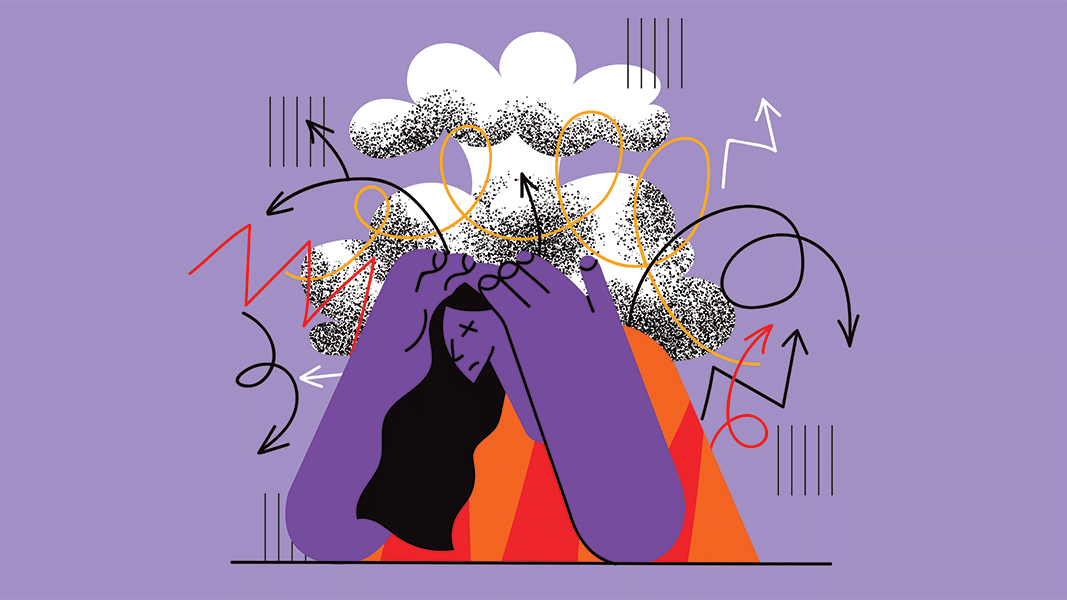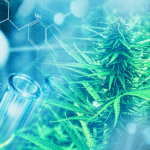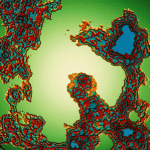Migraine headaches are quite common, affecting 12% of the worldwide population. Migraine headaches usually start in response to a specific trigger. Typically there is mild pain that escalates to severe pain, characterized by throbbing or pulsing headache, often affecting one side of the head. Associated symptoms include nausea, vomiting and sensitivity to light and/or sound. Migraine sufferers may feel sensory warning symptoms, called an aura, prior to onset of the headaches. Migraines seem to run in families.
The mainstay of treatment is a group of drugs called “triptans” which work by blocking the release of proinflammatory compounds in the brain. They are fairly effective for aborting or lessening severity of migraine headaches. Unfortunately, side effects can be significant and can include rebound headaches, pain or chest tightness, dizziness, nausea, vomiting, or warmth, redness, or tingling under the skin. Triptans are also costly, and many insurance companies restrict the amount of these medications that can be dispensed to patients. Another group of medicines called ergot alkaloids are also prescribed for migraines, but they are less effective than triptans.
Unfortunately, little research exists that proves the mechanism by which cannabinoids alleviate migraines, despite the overwhelming anecdotal reports from patients suffering with them. Recent studies show that migraine headaches may be due to endocannabinoid deficiency and abnormal inflammatory response. Remember that the endocannabinoid system exists to maintain cellular homeostasis. Often migraine sufferers report that headaches begin in response to a trigger, such as bright light, hunger, hormones, or certain smells or foods. The trigger event causes an imbalance in the brain, which should then trigger the production of endocannabinoids to maintain homeostasis. If one is deficient in endocannabinoids, the imbalance continues, leading to development of the migraine headache. The trigger may also cause inflammation, which may become out of control and contribute to the resulting pain.
The few studies that have looked at the link between migraines and the ECS are summarized here:
- Endocannabinoids and synthetic cannabinoids inhibited receptors that control vomiting and pain, working to block these symptoms 1
- THC reduces serotonin release (which blocks vomiting and pain) from the platelets of human migraine sufferers 2
- Cannabinoids were found to bind to areas of the periaqueductal gray matter (an area of the brain that modulates pain transmission) which have been implicated in migraine generation 3
- Three cases were reported of chronic heavy users of cannabis developing severe migraine attacks after abrupt cessation of use; authors suggested that these rebound attacks are similar to similar rebound headaches experienced by migraine patients when they abruptly stop other migraine treatment 4
- Genes that allow for increased inflammation were found in migraine patients and not found in control subjects 5
- Endocannabinoid levels were decreased in patients with chronic migraine and medication-over-use headaches suggesting that endocannabinoid dysfunction is involved in these two chronic conditions 6
Cannabis has been used for thousands of years to treat headaches. Medical cannabis patients are finding relief of pain, less nausea, and better sleep. Patients also report less frequency and less severity of their migraine headaches with medical cannabis use. A number of well-known trigger factors for migraine headaches, specifically sleep deprivation and anxiety or stress, are alleviated with cannabis, thereby reducing the number of migraine attacks. Patients also report that they spend less health care dollars on expensive migraine medications, have less missed days at school or at work, and have overall improved quality of life.
There is no question that THC-rich cannabis can help abort or lessen the severity of a migraine, especially if taken at the onset of the pain. Some patients report that low-dose, regular use of THC-rich medicine significantly reduces frequency and severity of the headaches. Other patients report that daily CBD-rich cannabis prevents migraine from occurring. Once the headache begins, a rapid delivery method such as inhalation or sublingual tincture is preferred by most. Specific strain choice results from trial and error for most patients.
Nina’s Story
Nina is a thin young woman with dark hair and eyes. Pleasant and personable, she came to see me with complaints that her constant migraines were interfering with both her personal and work life. A 40-year-old vice-president for a commercial real estate company and the married mother of a toddler, she had suffered from debilitating migraines since she was 14 years old. The migraine episodes had a predictable pattern that began with a headache a week before the actual migraine, and despite attempts to keep them at bay with multiple over-the-counter and prescription drugs (both heart and seizure medications), Nina was having three or four episodes of migraine a month and what she described as a constant headache otherwise. Seizure medications allowed her to function partially, but she experienced side effects, and while acupuncture provided some relief, it was only temporary, and Nina would eventually crash and go to bed.
Nina’s friends used cannabis recreationally, but she had never tried it. She was very interested in using cannabis as medicine and came to see me for advice. The effects were almost immediate. Nina finds that THC-rich strains combined with higher myrcene content (a terpene which helps with sleep) give her the best results. She uses a vaporizer mostly at night as it has quick onset of effects. After a short period of trial and error, she found that only a few puffs were needed to decrease pain and promote sleep. Before cannabis, if she had a headache, she felt as if she were running at 20% capacity. A full-blown migraine would send her to bed for two to three days. Since she began using cannabis Nina hasn’t used medication other than ibuprofen for three years and has had only three migraines total in that time.
Living with headaches and constant pain had become a way of life for Nina, and when she looks back on that life, she realizes how much time had been wasted and how unnecessary the pain was. The positive effects on her and her family have been profound. She doesn’t miss work because of migraines or need to go through the bureaucracy of submitting the Family Medical Leave of Absence forms she had done so many times over the years. Nina isn’t worried about what she can eat or the triggers for migraines anymore and feels more like a normal person. She’s happier and her family interactions have improved. She doesn’t have to cancel family events or gatherings and is an active participant in her child’s care. “I have no idea how I would have handled a screaming baby and a migraine!” she exclaimed to me. Nina doesn’t feel “high” and reports that she views cannabis as medication to be respected and used responsibly. She has educated her family and friends about it as she doesn’t want others to suffer needlessly as she had. “The cannabis takes care of everything,” she says. “I have a new life.”
Nina is another example of someone who very likely is suffering with an endocannabinoid deficiency. When she uses THC-rich cannabis, it works at the cannabinoid receptor to balance the neurotransmitters in her brain, which are sending an abnormal message of pain and inflammation. By specifically targeting this system, her symptoms have virtually resolved. Very simply put, the migraine medications that she found to be useless did not treat the root cause of the migraines. Nina is not just treating the symptoms of pain. She is maintaining balance of her endocannabinoid system, which is why the number of migraines has dramatically decreased since starting cannabis treatment.
Excerpted from Cannabis Is Medicine: How Medical Cannabis and CBD Are Healing Everything from Anxiety to Chronic Pain by Dr. Bonni Goldstein. © Copyright 2020. Available from Little, Brown Spark, an imprint of Hachette Book Group, Inc.
Dr. Bonni Goldstein, a Los Angeles-based physician, is the author of Cannabis Is Medicine and the medical director of Canna-Centers, which offers educational seminars and webinars on cannabis therapeutics. © Copyright, Project CBD. May not be reprinted without permission.
Sources
- Burstein, R., et al. “EHMTI-0354. Abnormal expression of gene transcripts linked to inflammatory response in the periosteum of chronic migraine patients: implications to extracranial origin of headache.” The journal of headache and pain 15.1 (2014): 1-1.
- Rossi, Cristiana, et al. “Endocannabinoids in platelets of chronic migraine patients and medication-overuse headache patients: relation with serotonin levels.” European journal of clinical pharmacology 64.1 (2008): 1-8.
- Lichtman, A., et al. Investigation of Brain Sites Mediating Cannabinoid-induced Antinociception in Rats: Evidence Supporting Periaquaductal Gray Involvement. Journal of Pharmacology and Experimental Therapeutics (1996) 276: 585-93
- El-Mallakh, R. Marijuana and Migraine. Headache (1987) 27: 442-43
- Burstein, R., et al.
- Rossi, Cristiana, et al.







